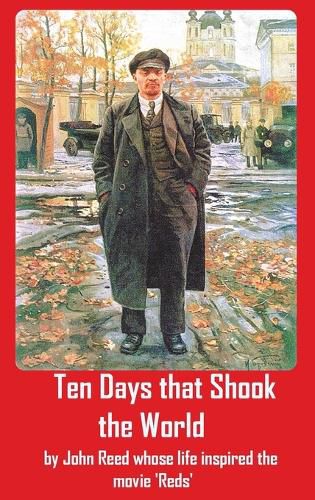Readings Newsletter
Become a Readings Member to make your shopping experience even easier.
Sign in or sign up for free!
You’re not far away from qualifying for FREE standard shipping within Australia
You’ve qualified for FREE standard shipping within Australia
The cart is loading…






This title is printed to order. This book may have been self-published. If so, we cannot guarantee the quality of the content. In the main most books will have gone through the editing process however some may not. We therefore suggest that you be aware of this before ordering this book. If in doubt check either the author or publisher’s details as we are unable to accept any returns unless they are faulty. Please contact us if you have any questions.
This book contains historical photographs from the Russian Revolution. John Reed was on an assignment for The Masses, a magazine of socialist politics, when he was reporting the Russian Revolution. Although Reed states that he had tried to see events with the eye of a conscientious reporter, interested in setting down the truth during the time of the event, he stated in the preface that in the struggle my sympathies were not neutral (since the book leans towards the Bolsheviks and their viewpoints). Ten Days That Shook the World has received mixed responses since its publication in 1919, resulting in a wide range of critical reviews from negative to positive. However, the book was overall positively received by critics at the time of its first publication, despite some critics’ vocal opposition to Reed’s political beliefs. George F. Kennan, an American diplomat and historian who had no love for Bolshevism and is best known as the father of containment, praised the book: Reed’s account of the events of that time rises above every other contemporary record for its literary power, its penetration, its command of detail and would be remembered when all others are forgotten. Kennan saw it as a reflection of blazing honesty and a purity of idealism that did unintended credit to the American society that produced him, the merits of which he himself understood so poorly. On March 1, 1999, The New York Times reported New York University’s Top 100 Works of Journalism list, which placed Ten Days that Shook the World at in seventh position.
$9.00 standard shipping within Australia
FREE standard shipping within Australia for orders over $100.00
Express & International shipping calculated at checkout
This title is printed to order. This book may have been self-published. If so, we cannot guarantee the quality of the content. In the main most books will have gone through the editing process however some may not. We therefore suggest that you be aware of this before ordering this book. If in doubt check either the author or publisher’s details as we are unable to accept any returns unless they are faulty. Please contact us if you have any questions.
This book contains historical photographs from the Russian Revolution. John Reed was on an assignment for The Masses, a magazine of socialist politics, when he was reporting the Russian Revolution. Although Reed states that he had tried to see events with the eye of a conscientious reporter, interested in setting down the truth during the time of the event, he stated in the preface that in the struggle my sympathies were not neutral (since the book leans towards the Bolsheviks and their viewpoints). Ten Days That Shook the World has received mixed responses since its publication in 1919, resulting in a wide range of critical reviews from negative to positive. However, the book was overall positively received by critics at the time of its first publication, despite some critics’ vocal opposition to Reed’s political beliefs. George F. Kennan, an American diplomat and historian who had no love for Bolshevism and is best known as the father of containment, praised the book: Reed’s account of the events of that time rises above every other contemporary record for its literary power, its penetration, its command of detail and would be remembered when all others are forgotten. Kennan saw it as a reflection of blazing honesty and a purity of idealism that did unintended credit to the American society that produced him, the merits of which he himself understood so poorly. On March 1, 1999, The New York Times reported New York University’s Top 100 Works of Journalism list, which placed Ten Days that Shook the World at in seventh position.